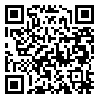BibTeX | RIS | EndNote | Medlars | ProCite | Reference Manager | RefWorks
Send citation to:
URL: http://irj.uswr.ac.ir/article-1-549-en.html

 , Iraj Abdollahi *1
, Iraj Abdollahi *1 
 , Mohammad Ali Mohseni Bandpei1
, Mohammad Ali Mohseni Bandpei1 
 , Mojtaba Azimian1
, Mojtaba Azimian1 
 , Hadi Motamedi1
, Hadi Motamedi1 
 , Akbar Biglarian1
, Akbar Biglarian1 
 , Alireza Rezvani1
, Alireza Rezvani1 

Objectives: Stroke is the leading cause of long-term disability. Hand motor impairment resulting from chronic stroke may have extensive physical, psychological, financial, and social implications despite available rehabilitative treatments. The best time to start treatment for stroke, is in sub-acute period. Repetitive transcranial magnetic stimulation (rTMS) is a method of stimulating and augmenting the neurophysiology of the motor cortex in order to promote the neuroplastic changes that are associated with motor recovery. The purpose of this study was to compare the effects of repetitive transcranial magnetic stimulation protocols plus routine rehabilitation on hand motor functions and hand corticomotor excitability in stroke patients with hemiplegia with pure routine rehabilitation programs.
Methods: This study was a randomized clinical trial which was performed on 24 patients with hemiplegia who were randomly divided in to three groups. One group (n=7), received high frequency repetitive transcranial magnetic stimulation (Hf rTMS) on lesioned M1 with routine rehabilitation program, and the other group (n=7), received rehabilitation program with low frequency repetitive transcranial magnetic stimulation stimulation (Lf rTMS) on nonlesined M1, and a control group (n=10), who were given only routine rehabilitation programs. The treatment was performed for 10 sessions, three times peri-test, Post and follow-up about neurophysiological contralesional hemisphere evaluations using record of MEP wave indices by single pulse TMS, and assessing functional wolf test and hand grip power of disabled hand by dynamometer.
Results: The results demonstrated that the rest MEP threshold reduction in experimental group which received high frequency magnetic stimulation was statistically significant (P<0.05). There was similar finding for active MEP threshold in the both high and low frequency but not in control group (P<0.05). Also there were more significant relation between obtained results from WOLF test and grip power with MEP mentioned parameters, in high frequency group, but not in low frequency and control group.
Discussion: According to the results, However it seems that Hf rTMS combined with routin physiotherapy can significantly improve hand functions and brain neurophysiology via specifically increase of contralesional corticomotor excitability in sever stroke patients that is representative of the role of neuroplasticity in nonlesioned hemisphere but the hypothesis of movement improvement related cognitive balance can't be eliminated by exploring powerful approved effect of Hf rTMS on mood regulation.
Received: 2015/07/20 | Accepted: 2015/10/8 | Published: 2015/12/1



